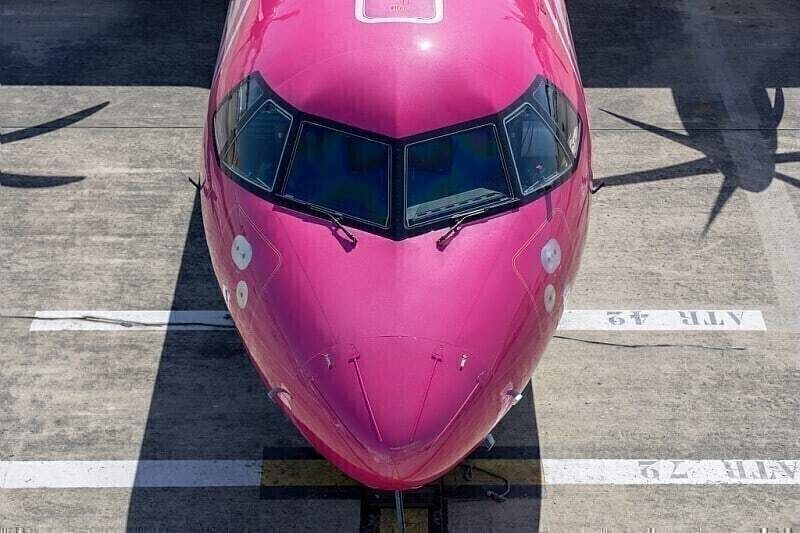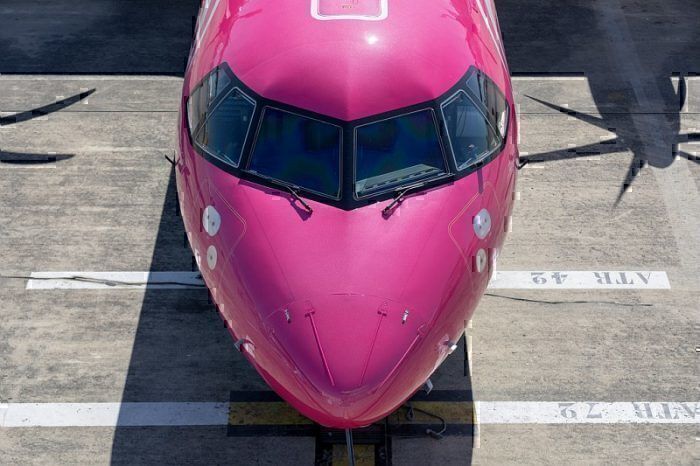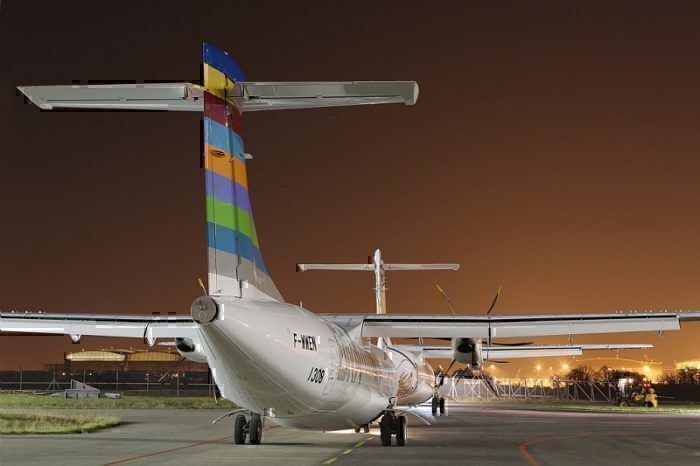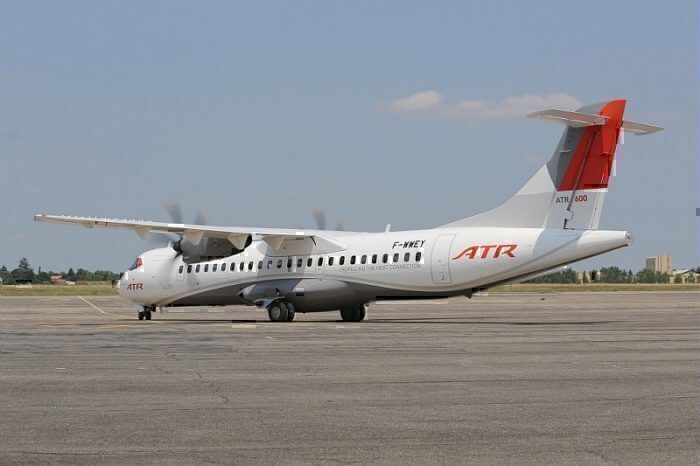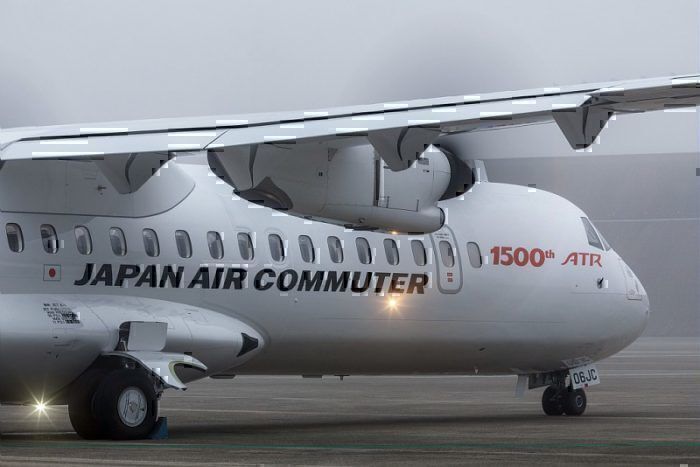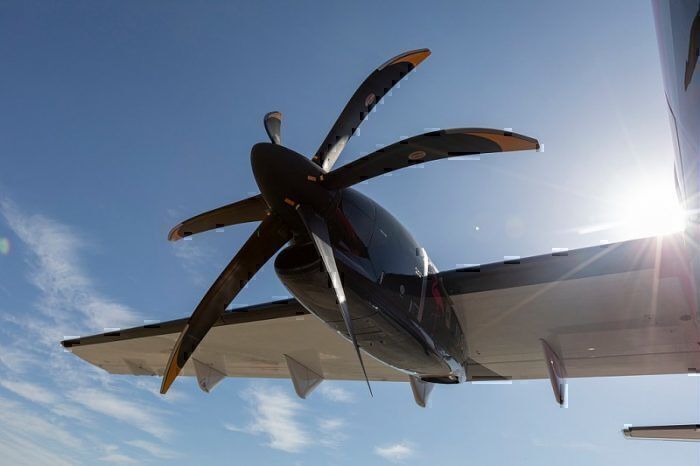In a paper published by MIDAS Aviation, under the services of AviaDev Consult, the potential for smaller aircraft in the European market was brought to the fore. Their research suggests that, of the 700,000 or so intra-European flights operated in a month, 10% or less are operated using a turboprop. Could smaller turboprops tackle CO2 emissions in Europe? Let’s take a look.
The European short-haul market
The most commonly used aircraft for intercontinental flights in Europe are the A320 and the Boeing 737-800. MIDAS estimates that 18% of all short-haul flights use the Airbus narrowbody, while 24% operate using a 737-800. These aircraft have a range of some 3,500km or more, but 80% of European flights are under 1,588km. In fact, 50% are less than 830km.
These small distances could be served just as well by something other than a narrowbody twinjet. Something like the ATR 72, for instance, with its range of over 1,500km, should be taking a bite out of these markets. Sure, it’s a little smaller, but figures all indicate that there is generally an oversupply of seats and that passengers much prefer frequency of services to being on a bigger plane.
Although there is clearly a market for smaller jets designed for regional hops, their use has been decreasing. Five years ago, some 88,000 flights a month were operated with turboprop aircraft, whereas in 2019, that number has dropped by around 10%. Whether this is down to concerns about passenger perceptions, fleet commonality issues or needing flexibility is unclear. What is clear is that switching out some of these jet aircraft operated routes for propeller aircraft could have far-reaching benefits.
Turboprops emit less CO2
The two main players in the turboprop field in Europe are DeHavilland Canada with their Dash-6 and Dash-8 models, as well as ATR with its ATR-42 and larger -72. Other turboprop manufacturers have just some 11% of the European market.
Simple Flying reached out to both ATR and DHC for information on their fuel consumption and CO2 figures. Only ATR were good enough to respond, stating that,
“Our standard figure for fuel consumption is 2.8l per seat per 100km. This can be converted into a CO2 emission of 7.1kg per seat per 100km (or 0.071kg per seat per km).”
Earlier this year, Wizz Air stated an achievement of 57g/RPK/CO2 (revenue passenger kilometers). The airline claimed an average fuel consumption of 2.27l/100km. This puts them ahead of ATR and pretty much every other airline in Europe. They say this is down to a lack of business class and investment in new aircraft. Likely their stormingly high load factors and typically longer routes are also helping things.
Wizz is very much the exception rather than the rule. Lufthansa indicates that its group fuel consumption in 2018 was some 3.65l/RPK, around 30% higher than the ATR. IAG, the owner of British Airways, Iberia and others, is targeting a CO2 output of 87.3g/CO2/RPK next year… the ATR already delivers lower than that.
However, jet engines can be highly efficient. On longer routes, where they can take off, reach maximum cruising altitude and stay there for a while, they would easily outcompete the turboprop. However, when the routes are shorter, particularly under 1,000km, jets barely get off the ground before they have to start descending again.
While a smaller turboprop might not be the best solution in every situation, there is a huge benefit on some of these shorter, low-density routes.
Learning from the USA?
In a review of US airlines’ fuel efficiency, the ICCT found that the fuel efficiency of Alaska Airlines’ regional operations also fell due to the greater use of regional jets instead of more efficient turboprop aircraft. The report stated that,
“In 2016, Alaska’s affiliate Horizon Air flew 132,000 turboprop flights, or one half of all such flights in the United States. By 2018, Alaska’s regional turboprop flights fell by about one-quarter, from 82% of regional flights in 2016 to 55% in 2018. This shift in aircraft type reduced the fuel efficiency of Alaska’s regional operations and, therefore, the carrier’s overall fuel efficiency. Fuel burn per revenue passenger mile for Alaska’s affiliates increased by 11%, and fuel burn per departure increased by 35% from 2016 to 2018.”
And Alaska wasn’t alone in slipping down the ranks. According to the paper, Hawaiian Airlines slipped five efficiency ranks from 2016 to 2016, partly due to using fewer turboprops.
Turboprops might not be a complete solution to aviation’s climate change woes; however, they could make a massive difference on these shorter, less dense routes around Europe. It’s fascinating to learn how something which seems so old fashioned, so outdated, could actually be an elegant solution to a very modern problem.

